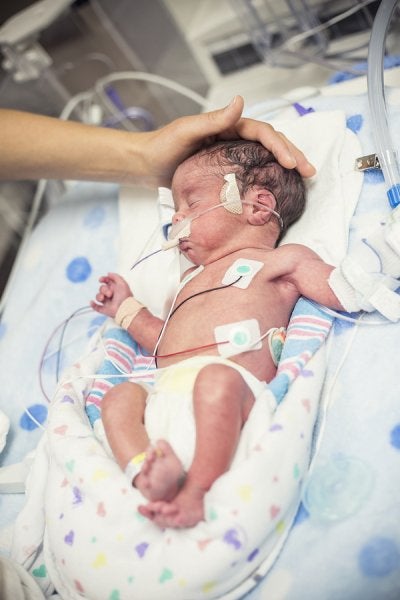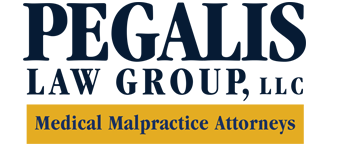-
Baby’s Injuries at Birth
The majority of births in the United States happen without notable complications. However, medical mistakes are too often made during labor and delivery and are not fully explained to parents, despite the resulting serious injuries that cause life-long harm. Here is a guide to some of the most serious types and causes of birth injuries:

Cerebral Palsy
Cerebral palsy is caused by permanent injury to a baby’s brain by trauma or a lack of oxygen. Cerebral palsy is a neurological condition with the common symptoms of seizures, speech delays, learning and other developmental delays and abnormal muscle tone. If complications during birth go unrecognized, they can cause lack of oxygen to the brain and permanent damage. Preventable birth injuries caused by misuse of vacuum extractors and other birth-assisting tools can increase the chances of traumatic injury to the brain.Erb’s Palsy
Erb’s palsy is the condition of nerve damage in the neck and arm with impaired motion in the arm and hand. The effects of the condition can run from severe to mild depending on how extensive the nerve damage is. The condition can be caused during birth if a doctor or midwife pulls on the baby’s head during delivery.Cortical Blindness
Cortical blindness also known as CVI is a type of birth injury that affects the ability to process visual information, such as depth perception and light perception. Cortical blindness frequently occurs along with cerebral palsy. CVI can be caused by decreased oxygen to the brain during the birth process. Other causes of CVI include hydrocephalus, developmental birth defects, head injury, and infections like meningitis. If healthcare providers discover, monitor, and remedy the conditions, irreversible damage may be avoided. The vision loss may be partial or total, but unfortunately is usually lifelong.If you are concerned about a misdiagnosis or possible medical error, contact the law firm of Pegalis & Erickson, LLC in New York. For 46 years, we have advocated for clients of all ages, to help their financial burden, and make future healthcare safer for others. You can speak directly to our attorneys by calling (516) 684-2900. There is no fee.
-
Do you know where your Brachial Plexus Is?
Every time you bend your wrist, raise your hand, or shrug your shoulders, you’re making use of your brachial plexus, a bundle of nerves centered in your spinal cord. The brachial plexus is responsible for controlling the movement of your entire arm! If a doctor or mid-wife uses force or twists a baby’s head during labor and delivery, it can result in injury to the baby’s nerves and chronic arm paralysis. This condition is known as Erb’s Palsy or Brachial Plexus palsy. While some children will make a full recovery as toddlers, other children move into their teens and adulthood not being able to enjoy full use of that arm. The condition will then continue through their lifetime. Treating Erb’s Palsy as soon as diagnosed can include a combination of physical therapy and nerve grafts. That oftent leads to a better lifetime outcome.
 If you wonder if your child’s disability could be the result of a medical error, it’s important that you talk with an experienced medical malpractice attorney. Pegalis & Erickson, LLC, can provide you with the professional legal guidance you require, at no charge. To reach our New York office, call us at (516) 684-2900.
If you wonder if your child’s disability could be the result of a medical error, it’s important that you talk with an experienced medical malpractice attorney. Pegalis & Erickson, LLC, can provide you with the professional legal guidance you require, at no charge. To reach our New York office, call us at (516) 684-2900. -
Is There a Cure for Erb’s Palsy?
 Erb’s palsy is a condition that affects approximately one in every 1,000 newborns. It involves nerve damage to the brachial plexus, the network of nerves in the upper arm. Infants who have Erb’s palsy may demonstrate a number of symptoms, including difficulty moving their hands, loss of feeling in their arms, or simply weakness throughout the arm. In some cases, the condition will resolve itself on its own, but it may take up to two years, and recovery may not be complete. Simple physical therapy exercises can be done to help the healing process along. In some cases, surgery may be recommended.
Erb’s palsy is a condition that affects approximately one in every 1,000 newborns. It involves nerve damage to the brachial plexus, the network of nerves in the upper arm. Infants who have Erb’s palsy may demonstrate a number of symptoms, including difficulty moving their hands, loss of feeling in their arms, or simply weakness throughout the arm. In some cases, the condition will resolve itself on its own, but it may take up to two years, and recovery may not be complete. Simple physical therapy exercises can be done to help the healing process along. In some cases, surgery may be recommended. At Pegalis & Erickson, LLC, we understand that medical malpractice is a difficult subject, especially when it affects an infant. If you are seeking legal guidance for a case of medical malpractice in Long Island, New York, call our legal team at (516) 684-2900 to schedule a consultation.
-
What Is the First Thing You Should Do if Your Child Is Injured During Childbirth?
Some birth injuries require immediate care, such as oxygen deprivation to the baby’s brain. After any sort of birth trauma is diagnosed, the first step to take is to ensure that your child gets the medical treatment he or she needs. Depending on your child’s specific condition, he or she may be admitted to the neonatal intensive care unit (NICU). Each hospital’s policies are a little different, but in general, parents can see their baby in the NICU as soon as the newborn has been stabilized and settled in. A nurse or patient navigator will explain what to expect from your child’s stay in the NICU.
 Once your baby is stabilized and the situation has calmed down, you should have a longer, in-depth conversation with the healthcare providers, which includes the neonatologist in charge of the NICU, who are treating your child. Take notes and ask plenty of questions. Ask whether your baby should have any additional medical tests or treatments, or should be seen by other specialists such as infectious diseases, pulmonology, cardiology, ophthalmology, and neurology, depending on the situation.
Once your baby is stabilized and the situation has calmed down, you should have a longer, in-depth conversation with the healthcare providers, which includes the neonatologist in charge of the NICU, who are treating your child. Take notes and ask plenty of questions. Ask whether your baby should have any additional medical tests or treatments, or should be seen by other specialists such as infectious diseases, pulmonology, cardiology, ophthalmology, and neurology, depending on the situation. Families affected by birth trauma near Long Island, New York can turn to the medical malpractice lawyers at Pegalis & Erickson, LLC. Call (516) 684-2900 for the answers to your legal questions.
-
Get the Facts about Brachial Plexus Injuries
 In each shoulder, there is a large and important bundle of nerves called the brachial plexus. These nerves allow for sensation and movement of the arm and hand. When this network of nerves sustains damage, it is referred to as a brachial plexus injury. This type of injury—even in its milder forms—can take weeks or months to heal. Unfortunately, brachial plexus injuries can occur as a result of birth trauma caused by medical malpractice.
In each shoulder, there is a large and important bundle of nerves called the brachial plexus. These nerves allow for sensation and movement of the arm and hand. When this network of nerves sustains damage, it is referred to as a brachial plexus injury. This type of injury—even in its milder forms—can take weeks or months to heal. Unfortunately, brachial plexus injuries can occur as a result of birth trauma caused by medical malpractice. The brachial plexus sustains mild damage when stretched; for example, during a difficult birth procedure. The stretched nerves may heal within a few months; however, the child may have to undergo physical therapy and surgery to strengthen the muscles around the nerves and reestablish arm function. On the other hand, if the nerve root is completely severed from the spinal cord, the child is unlikely to make a full recovery, and will have permanent disabilities, including the loss of sensation and movement in the affected arm.
Certainly, you want the best for your child, and if your baby suffered birth trauma near Long Island, New York, you can turn to the medical malpractice team at Pegalis & Erickson, LLC for guidance. Call us today at (516) 684-2900 to schedule a review of your case.
-
Reducing the Risk of Brachial Plexus Birth Injuries
The brachial plexus is a bundle of nerves located in the shoulder region. An injury to this network of nerves, known as a brachial plexus injury, can cause mild to severe symptoms that may be either temporary or permanent. Typically, the symptoms involve the loss of muscle control of the affected arm. A brachial plexus injury may occur at birth if the baby’s shoulder becomes lodged in the birth canal. Medical malpractice in the form of excessive physical maneuvers can result in a birth injury.
Prenatal Care

The risk of this form of birth trauma may be reduced if the expectant mother is given proper prenatal care. In fact, deviating from the standard of care for pregnant women is considered a form of medical malpractice. One of the risk factors of brachial plexus injuries is excessive weight gain of the mother during pregnancy. The healthcare provider should carefully monitor the mother’s weight gain and provide nutritional guidance as needed. The mother should be informed of the potential risks of excessive weight gain. Another controllable risk factor of brachial plexus injuries is gestational diabetes, which refers to the development of diabetes during pregnancy. Expectant mothers with gestational diabetes should be given extensive patient education on managing blood sugar levels to promote a healthy pregnancy, as well as a referral to high-risk doctors and nutritionists.
Cesarean Delivery
A C-section may be recommended for women with a high-risk pregnancy, such as when the baby is at a higher risk of developing a brachial plexus injury. The healthcare provider should assess the risk of the baby, such as by evaluating fetal size, and make appropriate recommendations. In the event that the labor and delivery is prolonged and excessive force might be required, the health care provider may be expected to recommend a C-section to prevent birth trauma.
The medical negligence lawyers of Pegalis & Erickson, LLC have years of experience helping families move forward after a birth injury diagnosis. If your child was diagnosed with a brachial plexus injury, you could consult our medical malpractice lawyer serving Long Island, New York to find out about your legal rights and options. To schedule a case review with a medical malpractice lawyer, call us at (516) 684-2900.
Recent Posts
Popular Posts
categories
- Uncategorized
- Infographic
- Patient Safety
- Patient Health
- Stillbirth
- Birth Injuries
- Medical Malpractice
- Medical Negligence
- Event
- Erb's Palsy
- Injury
- ER
- Video
- Cancer Misdiagnosis
- Medication Errors
- Cerebral Palsy
- Medical Negligence Lawyer
- Anesthesia Injuries
- Brachial Plexus
- Prostate Cancer
- About Us
- Men's Health
- Skin Cancer
- Breast Cancer
- Misdiagnosis
